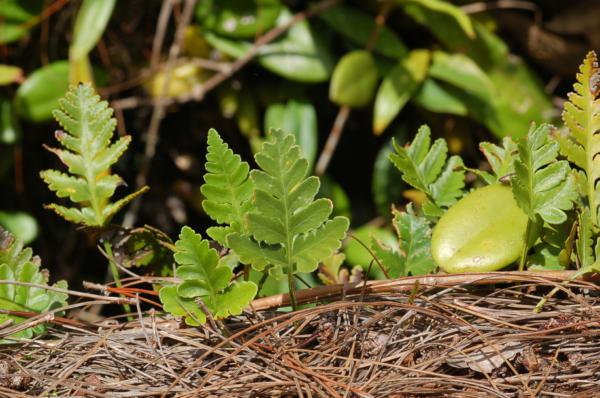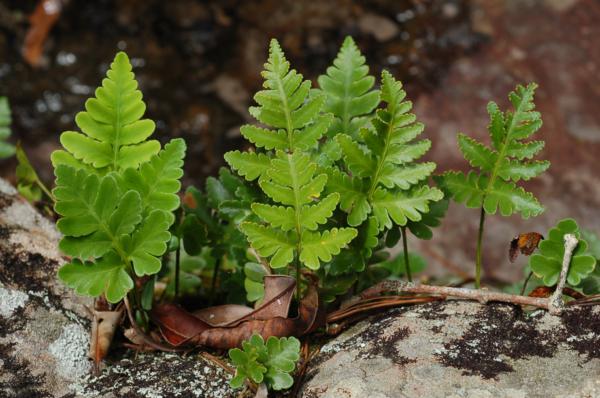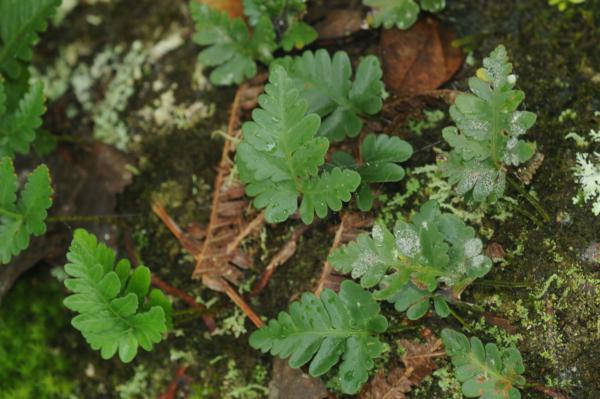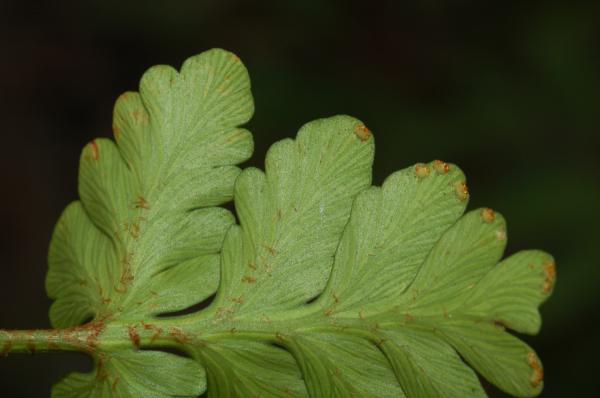
Davallia repens (L.f.) Kuhn
Family
Davalliaceae
Nomenclature
Davallia repens (L.f.) Kuhn, Filic. Decken.: 27. 1867 nom. cons., non Desv.; Christ, Bot. Tidsskr. 24: 111. 1901; Nooteboom, Fl. Males., Ser. II, Ferns and Fern Allies 3: 259. 1998; Newman et al., Checkl. Vasc. Pl. Lao PDR: 26. 2007. – Adiantum repens L.f., Suppl. : 446. 1781. – Humata repens (L.f) Diels, Nat. Pflanzenfam. 1(4): 209. 1899; C.Chr., Bot. Tidsskr. 32: 345. 1916; Tardieu & C.Chr., Fl. Indo-Chine 7(2): 111, f. 13.1. 1939; Holttum, Rev. Fl. Malaya ed. 1, 2: 371, f. 216. 1955 [‘1954’]; Holttum, Dansk Bot. Ark. 20: 26. 1961; Holttum, Dansk Bot. Ark. 23: 235. 1965; Seidenf., Nat. Hist. Bull. Siam Soc. 19: 86. 1958; Ching, Fl. Reipubl. Popularis Sin. 2: 307, pl. 27, f. 1–5. 1959; Tagawa & K.lwats., SouthE. Asian Stud. 5: 77. 1967; Tagawa & K.Iwats., Acta Phytotax. Geobot. 23: 54. 1968; U.Sen, T.Sen & Holttum, Kew Bull. 27: 228. 1972; Tagawa & K.Iwats., Fl. Thailand 3: 166. 1985; Boonkerd & Pollawatn, Pterid. Thailand: 172, 236. 2000. – Pachypleuria repens (L.f.) M.Kato, J. Fac. Sci. Univ. Tokyo, Sect. 3, Bot. 13: 573. 1985; Tagawa & K.Iwats., Fl. Thailand 3: 616. 1989. – Type: Sonnerat par Thouin (Commerson) 74 (P holo; L), Ile de France (Mauritius).
Davallia vestita Blume, Enum. Pl. Javae: 233. 1828. – Pachypleuria vestita (Blume) C.Presl, Epimel. Bot.: 261. 1851 [‘1849’]; Tagawa & K.Iwats., Fl. Thailand 3: 616. 1989. – Humata vestita (Blume) T.Moore, Index Fil.: xcii. 1857; Holttum, Rev. Fl. Malaya ed. 1, 2: 370, f. 215. 1955 [‘1954’]; Tagawa & K.Iwats., SouthE. Asian Stud. 5: 77. 1967; Tagawa & K.Iwats., Fl. Thailand 3: 165. 1985; Boonkerd & Pollawatn, Pterid. Thailand: 236. 2000.
Humata pinnatifida Bedd., Suppl. Ferns Brit. Ind.: 12. 1892.
Description
Rhizome long creeping, 1.5–2 mm diam., glabrous, densely scaly throughout; scales linear-lanceolate, acuminate at basal edge, long-acuminate at apex, 6–9 mm by 1.2 mm, brown with paler margin. Stipes stramineous, terete, up to 15 cm long, sparsely scaly. Laminae oblong-subdeltoid or roundly pentagonal, (0.6–)2.5–14(–24) by (0.5–)2–11(–14) cm, pinnatifid to tripinnatifid in basal pinnae; basal pinna the largest, asymmetrically subtriangular to oblong-subdeltoid; upper pinnae linear-subtriangular, gradually becoming smaller upwards, shallowly lobed or entire, sessile or adnate; pinnules oblong, oblique, round at apex, lobed or subentire, coriaceous, glabrous. Sori marginal, small, 1–5 on each pinnule; indusia nearly semi-circular, entire and free except for the base to 1 mm broad.
Distribution in Thailand
NORTHERN: Mae Hong Son, Chiang Mai, Chiang Rai, Lamphun, Lampang, Phitsanulok; NORTH-EASTERN: Loei; SOUTH-WESTERN: Kanchanaburi, Phetchaburi, Prachuap Khiri Khan; CENTRAL: Nakhon Nayok; SOUTH-EASTERN: Chanthaburi, Trat; PENINSULAR: Ranong, Surat Thani, Phangnga, Nakhon Si Thammarat, Trang, Yala.
Distribution in Laos
Unspecified.
Distribution in Cambodia
Kampot.
Wider Distribution
Widely distributed in the tropics of the Old World: Madagascar and Seychelles, Mascarene Islands, Himalayas to S Japan, SE Asia generally, throughout Malesia to Polynesia and Australia.
Ecology
On mossy tree trunks or on rather dry rocks in half-shaded places in dense forests at 1000–1600 m alt.
Proposed IUCN Conservation Assessment
Least Concern (LC). This species is widespread and not under any known threat.
Voucher specimens - Thailand
Middleton et al. 5076, Phitsanulok, Phu Hin Rong Kla National Park (E).
Voucher specimens - Cambodia
Martin 1140, Kampot (P).
Habit
Habit
Habit
Habit
Rhizome and fronds from above
Rhizome and fronds from beneath
Frond from beneath
Lower surface of Lamina with sori
Site hosted by the Royal Botanic Garden Edinburgh. Content managed by Stuart Lindsay, Gardens by the Bay, Singapore and David Middleton, Singapore Botanic Gardens. Last updated 24 January 2012
_TP_9401_sml.JPG)



_PK_8496_sml.JPG)
_PK_8497_sml.JPG)
_PK_8495_sml.JPG)
